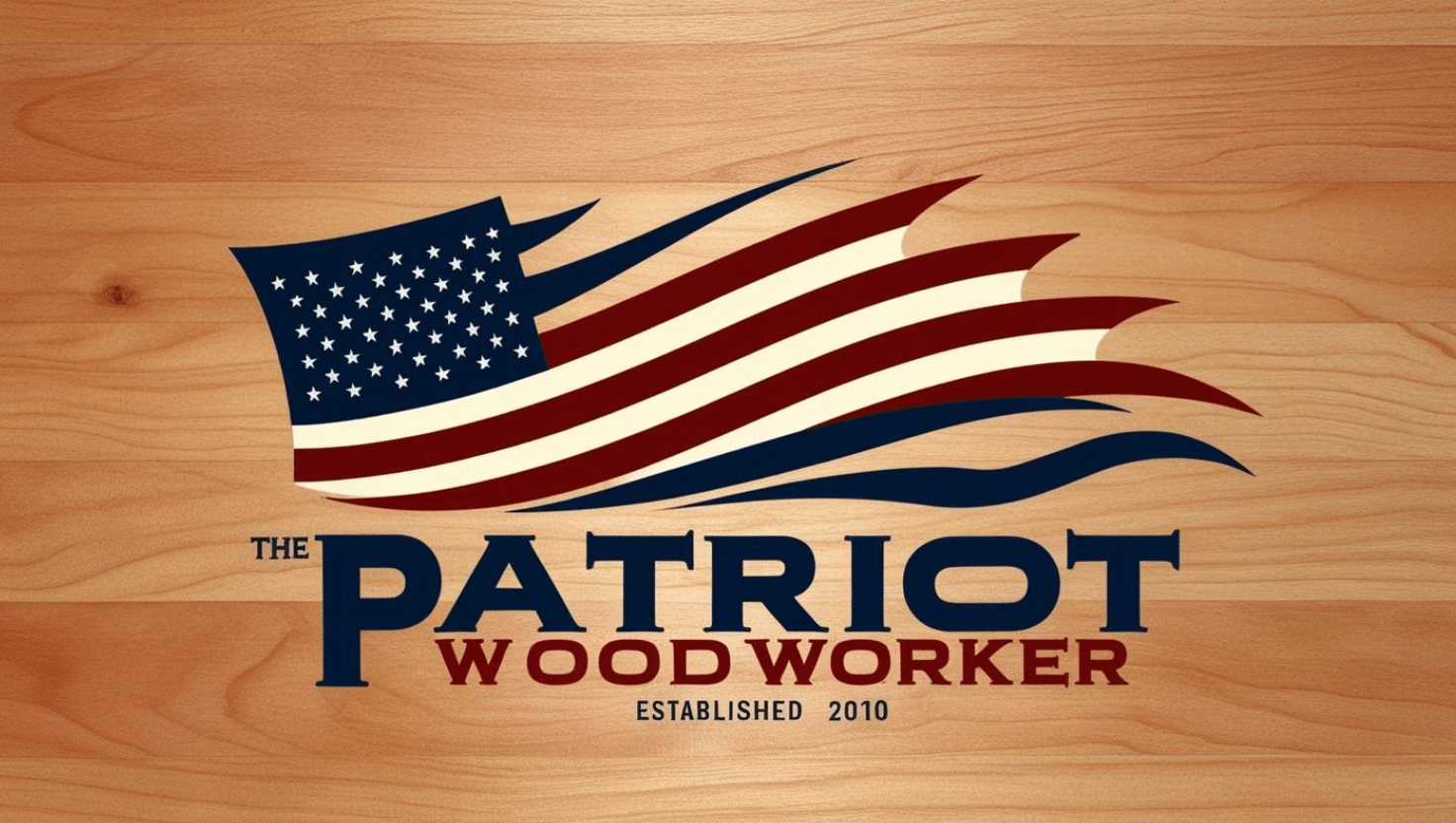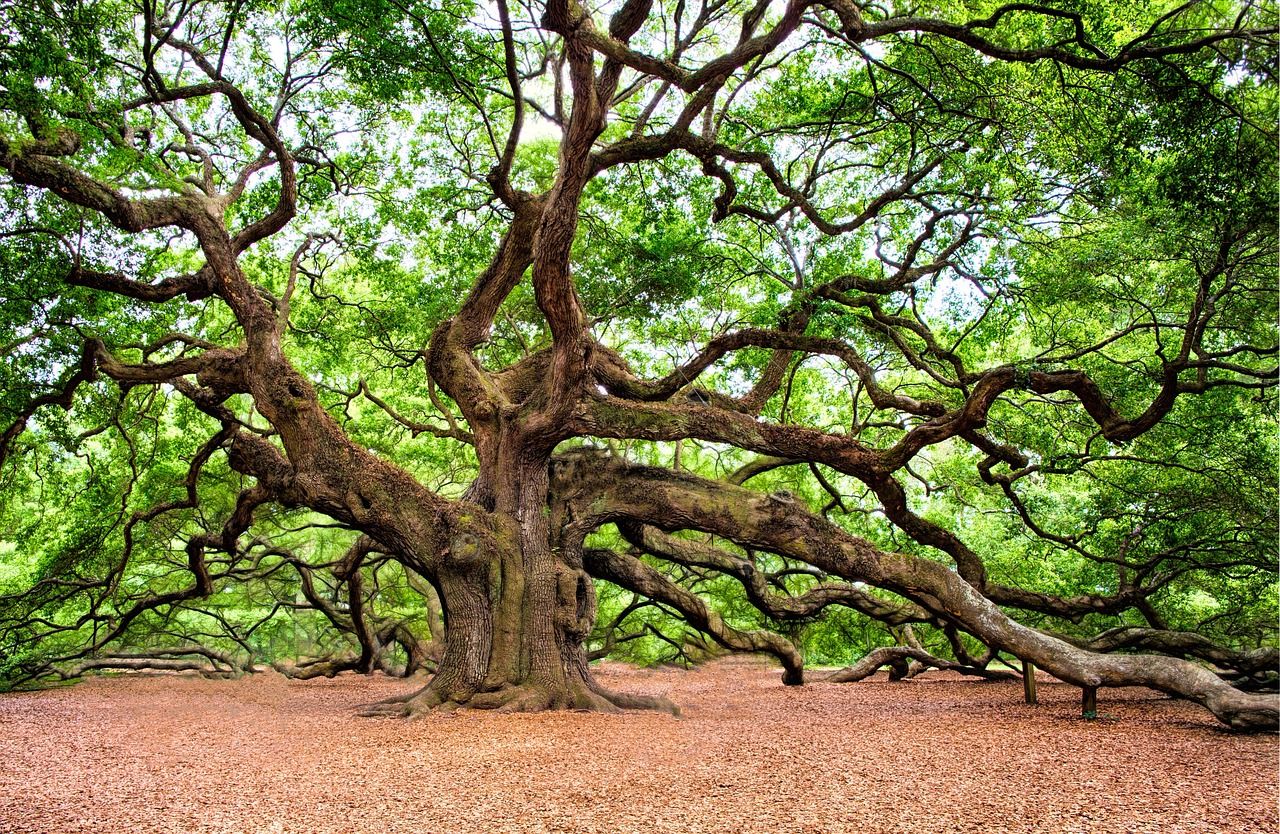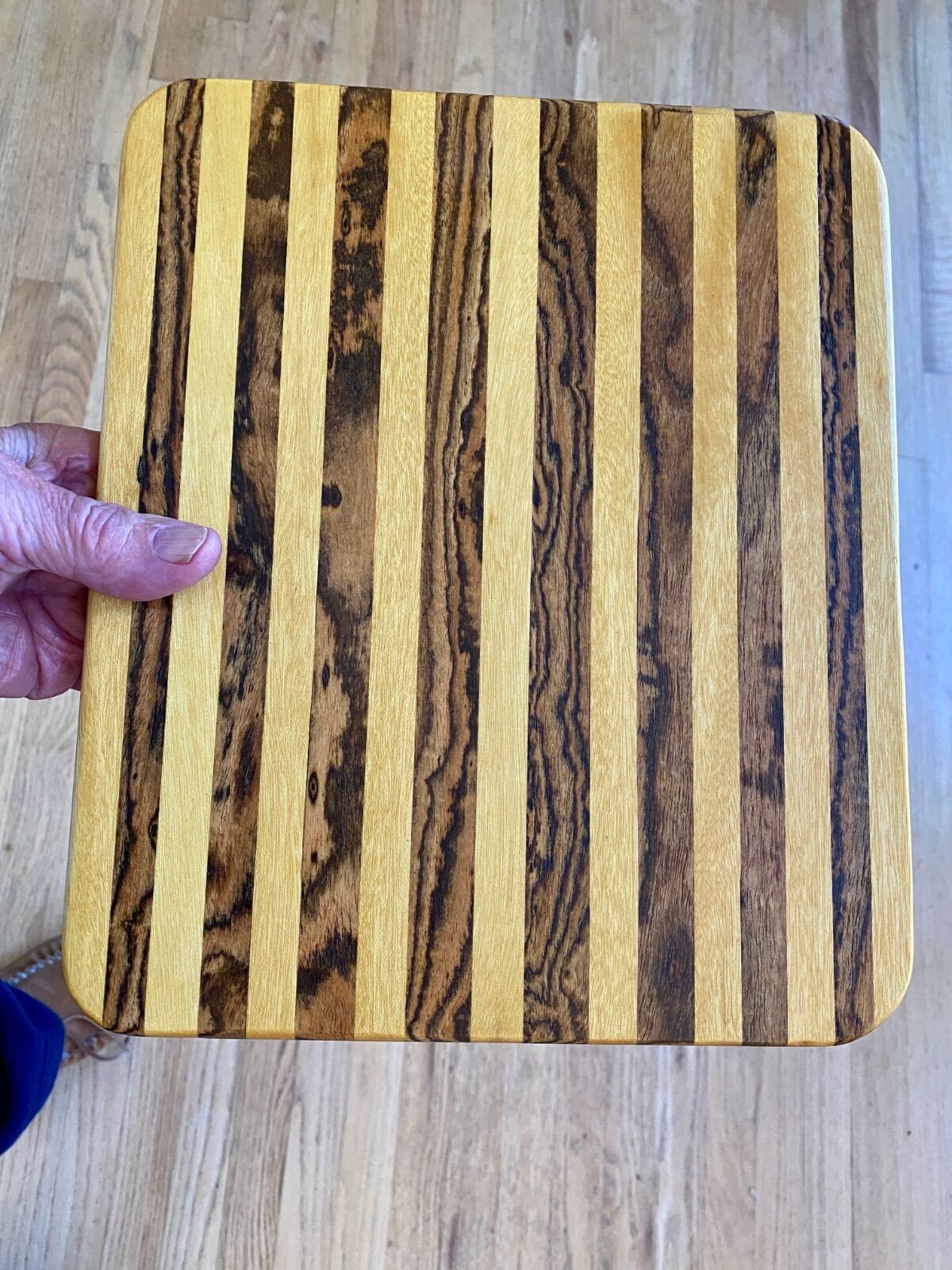Search the Community
Showing results for tags 'hardwood'.
-
The Tree The Black Walnut tree is one of the best known and most valuable of all forest trees native to the United States. It is of value not only because of its beautiful and highly prized wood but for its delicious nuts used in foods such as candy, bread, cakes, and ice cream. It is strictly an American tree, growing naturally nowhere else. It has been proposed frequently as our national tree and has been known for generations as the “tree of the gods and kings.” In 1945 a Black Walnut tree in Kentucky was sold alive for $1,500 and was cut up into veneers worth $35,000. The stumps of some large trees have been sold at fabulous prices for use as veneers. Black Walnut is usually a well-shaped tree of moderately rapid growth for a hardwood, and attains large size. It is not uncommon to find walnut trees 100 feet tall and three feet in diameter. The tree requires deep, rich, moist, but well drained soils. The bark is dark and rather deeply grooved. The leaves are one to two feet long, and have 15 to 23 narrow, sharply-toothed, slender-pointed leaflets. The nuts, which are one and one-eighth to one and one-half inches in diameter, have a very hard deeply grooved shell encased in a ball-like hull, from one and one-half to two inches in diameter, consisting of a black, thick pulp having a mottled, light green covering. The nuts within the pulp must be removed with care as the pulp stains everything it touches and is difficult to remove before it is thoroughly dried. A yellow dye is made from the bark, and husks of the nuts. Black Walnut Foliage and Nuts Black Walnut Tree Bark Common Names in Use Black Walnut (N.H., Vt., Mass. R.I., Conn., N.Y., N.J., Del., Pa., Va., W.Va., N.C., Tenn., Ga., Fla., Ala., Miss., Tex., La., Ark., Ky., Mo., Ind., Ill., Kans., Nebr., Iowa, Mich., Ohio, S.Dak., Minn., Ontario) American Black Walnut (trade) American Walnut (trade) Dent-soo-kwa-no-ne "Round Nut" (N.Y. Indians) Gun-Wood (trade) Walnut (N.Y., Del., W.Va., Fla., Ky., Tenn., Mo., Ohio, Ind., Iowa) Walnut-tree (Pa., S.C.) Growth Range The natural growth range of Black Walnut extends from Massachusetts to southern Ontario and central Nebraska southward throughout the eastern half of the United States, excepting the Atlantic coastal plain south of Virginia, the Gulf coast region, and the lower Mississippi Valley. It attains its best growth in the central portion of this range in deep, rich, moist and well-drained soils. The Wood The Black Walnut heartwood varies somewhat from light to dark chocolate brown with frequent alternate light and almost black stripes which produce very beautiful figured effects. The narrow sapwood is nearly white with a narrow shading into the darker heartwood and gradually turns darker upon exposure. This wood is hard, strong, works well with tools and is one of the most desirable and useful of all American woods. The darker the wood the more valuable it is, and for this reason it is a quite frequent practice to stain or steam the sapwood to match the heartwood. Also, the stain is sometimes forced through the entire board to produce the more valuable deep dark brown color. The crotches, burls and stumps produce exceptional figured and mottled designs and are very valuable for high quality veneers. The knots, crooks, irregular growth and curly or wavy grain, especially near the knots, produce handsome figures. In the burls of old mature trees the bird’s-eye effect on a glossy jet black to lighter shades of brown is frequently found. The wood finishes to a pleasing velvety sheen, glues satisfactorily, and polishes exceptionally well with all types of paint, stain, wax or other finishingmaterials. It holds its shape, and after being seasoned, shrinks or swells very little. Black Walnut Curly and Fiddle Back Figure Uses Black Walnut is superior to all other woods for gun stocks because it keeps its shape, is comparatively light in weight, and absorbs recoil the best of all woods. The most important use of the lumber and of the beautiful figured veneers is in furniture, radio and television cabinets, sewing machines, wooden novelties and general mill-work. It is an especially desirable wood to work with all kinds of tools, and is a favorite wood in all Home Work Shops and Manual Training Schools. Walnut wood is so valuable that it is mainly cut into veneers. It is No.1 on the wood list of every woodworking shop. Bibliography Shelley E. Schoonover (American Woods) 1951 (Watling & Co. ) Santa Monica, CA
- 5 comments
-
- black walnut
- american woods
-
(and 2 more)
Tagged with:
-
From the album: Black Walnut
Black Walnut Curly and Fiddle-Back Figure (page 102 of American Woods)-
- black walnut
- hardwood
-
(and 1 more)
Tagged with:
-
From the album: Black Walnut
Black Walnut Grove in Indiana (page 100 of American Woods)-
- black walnut
- hardwood
-
(and 1 more)
Tagged with:
-
-
- black walnut
- range map
-
(and 2 more)
Tagged with:
-
From the album: Black Walnut
Black Walnut tree bark-
- black walnut
- bark
-
(and 2 more)
Tagged with:
-
From the album: Black Walnut
Black Walnut with leaves and nuts.-
- black walnut
- hardwood
-
(and 2 more)
Tagged with:
-
The Tree The Butternut is usually not a large tree, seldom being more than 35 to 50 feet high and having a short trunk 12 to 30 inches in diameter, but in the forest it may occasionally grow from 80 to 100 feet high and three to four feet in diameter. The branches spread out into a wide symmetrical crown when the tree grows singly in open areas. It is very commonly called White Walnut and is very similar to Black Walnut in its shape and many other characteristics. The Butternut tree is prized more for its edible nuts than for the lumber it produces. The tree is comparatively short-lived and is very susceptible to breakage from the ravages of the weather and to attack by insects and disease. The nut is oblong in shape and deep-ridged. The kernel is very sweet, delicious in flavor, and is very rich and oily for which reason the name Oil-Nut is sometimes given the tree. The husk is pear shaped, sticky and has some properties as a dye of a yellow or orange color. The sap of the Butternut is very sweet and a syrup of fair quality may be made from it, but it is difficult to concentrate into sugar cakes as is done with maple sap. Common Names in Use Butternut (Me, N.H., Vt., Mass, R.I., Conn., N.Y., N.J., Pa., Del., W. Va., N.C., S.C., Ala., Ark., Ky., Tenn, Mo., Ill., Iowa, Ind., Mich., Minn.,Wis., Kans., Nebr., Ohio, Ontario) American White Walnut (trade) Butternut (N.J.) Lemon Walnut (lit) Oil Nut (Me., Minn., N.H., S.C.) Walnut (Minn) White Walnut (Del., Pa., Tenn., Va., W. Va., N.C., S.C., Ala., Ky., Mo., Ill., Ind., Wis., Iowa., Nebr., Minn., S.Dak.) Butternut tree bark Butternut Foliage Butternut Fruit Growth Range The growth range of Butternut extends from New Brunswick, southern Quebec, and southern Ontario throughout the northeastern section of the United States from New England westward through New York to the southern part of the Lake States and southeastern corner of South Dakota as far south as northern Arkansas, Mississippi, Alabama, Georgia and the northwestern tip of South Carolina. The Wood Butternut wood is lighter in weight and not as strong or durable as Black Walnut. It is coarse-grained, soft in texture. The heartwood is a gray-brown or light-chestnut-brown color, sometimes with a reddish tinge. The sapwood is narrow and a light-gray or light-brown color. When finished, the wood has a beautiful satiny luster. It may be worked easily with all types of tools, but being a soft wood must be worked with care and with very sharp tools. Butternut by Romeyn Beck Hough Butternut wood pieces Uses The wood is used mainly for interior finish and in the manufacture of furniture, some wooden ware and other cabinet work. It is used by wood carvers,and church altars are made of it. When quarter-sawed it has a very attractive figure and grain and may well be used to a greater extent in cabinet work and novelties. Butternut bowl turning by Lewis Kauffman Butternut bowl (bottom) by Lewis Kauffman Bibliography Shelley E. Schoonover (American Woods) 1951 (Watling & Co. ) Santa Monica, CA
-
- butternut
- american woods
-
(and 2 more)
Tagged with:
-
From the album: Butternut
Romeyn B. Hough's American Woods, Volume I plate 14 Reference: Plate_14.Jpg (JPEG Image, 1873 × 2711 Pixels) - Scaled (33%). https://www.lib.ncsu.edu/specialcollections/forestry/hough/vlgimage/plate_14.jpg. Accessed 27 Oct. 2019.© © CC BY-NC-SA 4.0
-
The Hardwoods are commonly known as Broadleaf trees because of their broad netted-vein leaves. The botanical name for these plants is Dicotyledon. They are usually deciduous. Generally they grow in Temperate Zones and at comparatively low elevations. Our native forest hardwoods comprise 17 maples and boxelders, 7 birches, 61 oaks, 18 hickories, 19 ashes, 6 elms, 15 cottonwoods and poplars, 22 willows, 14 wild cherries, 11 wild plums, 10 wild apples, 178 hawthorns, 6 hackberries, 5 gums, 9 magnolias and 297 other miscellaneous species, including such trees as the mulberries, holly, locusts, persimmon, dogwood and walnuts. In addition, a large number of exotic trees, mostly hardwoods, have been introduced into the United States. They were brought in principally for ornamental and landscape planting, but many of them have escaped cultivation and have become well established in the forests, woodlots and along streams in the different sections of our country. This is true, for example, of the Chinaberry, Ailanthus, Tamarisk, Mimosa, and many others. The wood produced from hardwood trees may be either hard or soft in texture; the hardness or softness of the wood does not necessarily place it in the softwood or hardwood classification. The wood of some hardwood trees, such as Basswood and Boxelder, is very much softer in texture than the wood of most softwood or coniferous trees. Included in this volume is a representative list of hardwoods, selected because of their commercial importance, diversity of color and characteristics of grain, texture and figure. Bibliography Shelley E. Schoonover (American Woods) 1951 (Watling & Co. ) Santa Monica, CA
-
A recent post by @forty_caliber about turning pecan got me to wondering about the domestic woods each of us prefer for flat work and/or turning and, why. For instance, Steve Newman, with his literally hands on experience, doesn't seem to prefer any particular species. But, I'm sure he has a few he'd rather not work with. It seems that you turners love a challenge and, will try anything. But, I'll bet you have a favorite. How do you decide? Of course, the choice of wood, whether for turning or flat work, will depend on the project, most likely. What are the characteristics you use to decide? Is workability a factor? Appearance? Cost? Availability? If I could find a supplier, my favorite wood for flat work would be Sitka Spruce for it's ease of working and appearance. It carves nicely, too. But, cost and, lack of availability rules it out for me. But, you lucky folks in the north west can probably find it easily. Cost is another factor, though. My wood pile is heavy in IL Black Walnut, with mesquite running a close second. I really enjoy good clear pine but, out here, it's scarce and as costly as walnut. But occasionally, well rarely actually, one can stumble on some useable scraps at construction sites. I think, for appearance and workability, mesquite has to be top of the list for me. You do need sharp, NOT RED saw blades, though. So, tell us about your favorites and why.
-
I made this one out of yellow heart and a Mexican hardwood that I can’t remember the name of It is 11x12 and is a Christmas gift for my daughter
-
I just got a boat load of Limba hardwood. My Aunt's grand daughters father in law bought it and died so they wanted to get rid of it. I have no idea what he was going to do with it but as I have studied the wood, it is for east Africa and normaly used to make musical instruments. I have as much 8/4 as 4/4 rough wood and wonder if anyone out there has ever worked with this wood. I haven't begun to think of what I will build with this wood but have heard that it has silica in it. Any reason that the sawdust could be bad to the lungs? Thanks for any recommendations. Ron

.thumb.jpg.573d1497d0675219908c85aabefd797a.jpg)













